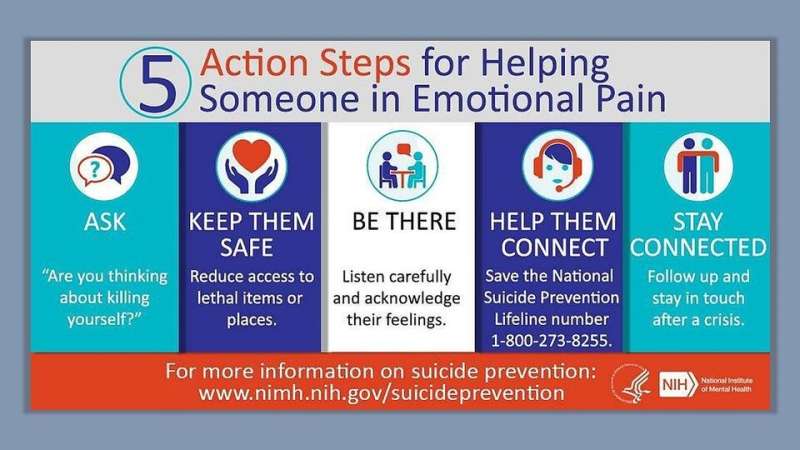To prevent suicides, johns hopkins medicine says, know warning signs; follow tips

According to the National Institute of Mental Health, suicide is the 10th leading overall cause of death in the United States and the second leading cause of death in children and young adults between 10 and 34 years old. Research has shown that the majority of suicides are a consequence of mental illness—most commonly depression. Depression can cause someone to feel worthless, hopeless and a burden on others. The illness may prevent people from recognizing that these feelings are temporary, making suicide falsely appear to be a solution.
"Suicide risk is very hard to predict," says Paul Nestadt, M.D., assistant professor of psychiatry and behavioral sciences at the Johns Hopkins University School of Medicine. "Even seasoned experts are hard pressed to accurately determine the risk."
Nestadt says the general warning signs of suicide risk may include the symptoms of major depressive disorder—a change in usual activities; isolation; losing interest in people and activities that previously brought joy; new or increased use of drugs or alcohol; unintentional weight loss or low energy; negative self-talk; and suicidal thoughts.
According to the U.S. Centers for Disease Control and Prevention, more than 15,000 people under the age of 34 in the United States died from suicide in 2019, the most recent year with statistics. Sadly, say experts at Johns Hopkins Children's Center (JHCC), this shows that children and young adults are especially vulnerable to suicide.
"Pandemic or no pandemic, suicide kills way more kids than infectious diseases every year, including during the COVID-19 pandemic," says John Campo, M.D., director of the Division of Child and Adolescent Psychiatry at JHCC and professor of psychiatry and behavioral sciences at the Johns Hopkins University School of Medicine. "Even if we take the pandemic off the table, we've been asleep to the risk of suicide to kids."

Nestadt and Campo admit that suicide is a difficult topic to discuss, but they say it's vitally important because talking openly and honestly about it can help save a life.
"If you are concerned about someone having suicidal thoughts, it is appropriate to ask 'Are you having thoughts that life is not worth living?' or 'Are you thinking about suicide?'" says Nestadt. "These questions will not 'plant the idea' or otherwise increase the risk of suicide, but they are good ways to tell if someone may be at risk."
In recognition of September being National Suicide Prevention Awareness Month, here are some tips from Johns Hopkins Medicine on interventions:
- Offer help and support. If a loved one is struggling, encourage them to seek care.
- Restrict access to weapons as much as possible. Any firearms should be locked away securely or temporarily transferred out of the house. Even small barriers to lethal means can be dramatically lifesaving.
- Look out for each other. Reach out when struggling; be honest with your feelings; and trust your support system.
- For parents who think their child might be at risk for suicide, consult with the child's pediatrician or a mental health professional without delay.



















